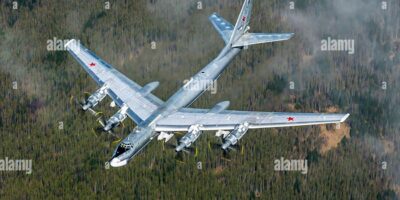PA46 Aircraft: A Comprehensive Overview
PA46 Aircraft: A Comprehensive Overview
The Piper PA-46 is a family of American light aircraft manufactured by Piper Aircraft. The PA-46 family includes diverse models, each offering unique features catering to private pilots and small business owners.
Introduction to the PA46 Family
The PA-46’s journey began in the 1970s when Piper Aircraft designed this new aircraft for improved performance and comfort. The first model, the PA-46-310P Malibu, flew in 1979, followed by its enhanced siblings. All planes in this series share a single-engine design, notable for their cruising speed and range capabilities.
PA46-310P Malibu
The PA46-310P Malibu is the original model introduced in 1983. It features a 310 horsepower Continental TSIO-520-BE engine. The Malibu achieves a maximum cruising speed of around 225 knots and has a range of approximately 1,550 nautical miles. Its cabin is pressurized, ensuring passenger comfort during high-altitude flights.
PA46-350P Mirage
The Mirage followed in 1988 as an upgraded version. It boasts a Lycoming TIO-540-AE2A engine with a 350 horsepower rating. This model maintains a pressurized cabin like the Malibu, enabling flights up to 25,000 feet. The Mirage can cruise at 213 knots and has a slightly reduced range compared to the Malibu but offers improved engine performance. It became popular for its high level of safety and reliability.
PA46-500TP Meridian
The introduction of the Meridian in 2000 added a turboprop engine to the PA46 lineup. The Pratt & Whitney Canada PT6A-42A turbo engine provides 500 horsepower. This engine upgrade allows for a maximum speed of approximately 260 knots and a range of 1,000 nautical miles. The Meridian includes advanced avionics, modernizing cockpit operations and enhancing ease of navigation.
PA46R-350T Matrix
The Matrix appeared in 2007 targeting pilots desiring a cost-effective, unpressurized alternative. It is equipped with the same Lycoming engine found in the Mirage but lacks the pressurization feature. The Matrix appeals to those who prioritize efficiency and simplicity while retaining a solid performance profile. Its max cruising speed is similar to the Mirage, although typically flown at lower altitudes due to its non-pressurized cabin.
PA46 Improvement Programs
Continuous improvements have occurred throughout the PA46’s service life. Piper Aircraft frequently updates the series with newer technology and hardware upgrades, ensuring the fleet remains competitive. These upgrades often include avionics enhancements, aerodynamic refinements, and interior comfort improvements. Piper also provides retrofit options for older models, which help maintain their value and operational efficiency.
Typical Usage and Missions
The PA46 series is versatile, commonly used for personal transportation, business travel, and air charter services. Its ability to cover significant distances quickly and comfortably makes it a popular choice among small business owners and private pilots. These aircraft can perform well across various environments, from short local trips to long cross-country flights, adapting to different flying conditions.
Ownership and Operating Costs
Owning a PA46 involves initial purchase costs and ongoing expenses. The acquisition price varies by model and age, with newer and more advanced models commanding higher prices. Operating costs encompass fuel, maintenance, hangar fees, insurance, and periodic overhauls. The turboprop models generally incur higher operational costs compared to piston engine variants due to more complex systems and higher fuel consumption. Regular maintenance and adherence to Piper’s service programs can help minimize unscheduled repairs and ensure longevity.
Pilot Training and Certification
Pilots operating a PA46 must undergo specialized training, particularly for the pressurized and turboprop models. Transition training includes ground school and flight training emphasizing aircraft systems, high-altitude operations, and emergency procedures. Additionally, recurrent training is essential to maintain proficiency, often required by insurance companies for coverage. Simulator training facilities offer comprehensive courses designed to simulate realistic scenarios faced by PA46 pilots.
Safety Considerations
Safety is paramount in the design and operation of the PA46 series. The aircraft incorporate several safety features, including advanced avionics for better situational awareness, redundant systems, and robust structural design. Regular maintenance and adherence to prescribed service intervals play a crucial role in ensuring safe operations. The cockpit’s ergonomic design aids in reducing pilot workload, contributing to safer and more efficient flight management.
The Future of the PA46 Series
The PA46 series continues to evolve with advancements in technology and materials. Piper Aircraft frequently assesses market demands and incorporates innovations to enhance performance and efficiency. Emerging trends such as hybrid propulsion and advanced avionics are likely to influence future models. Piper’s commitment to continuous improvement ensures that the PA46 series remains a competitive choice in the light aircraft category.
Community and Support
The PA46 community is robust, with numerous owner and pilot associations offering support, knowledge sharing, and networking opportunities. These groups facilitate mutual assistance among members, enhancing the overall ownership experience. Piper Aircraft provides extensive support through authorized service centers and customer assistance programs, ensuring access to technical expertise and parts supply.
Common Modifications and Upgrades
Owners frequently opt for modifications and upgrades to enhance their PA46 aircraft’s capabilities. Popular enhancements include engine upgrades for improved performance, avionics updates for better navigation and safety, and interior refurbishments for increased comfort. These modifications help maintain the aircraft’s relevance and compliance with modern aviation standards.
Key Takeaways
The PA46 series stands out for its combination of performance, comfort, and versatility. It caters to a wide range of pilots, from personal users to business operators, offering reliable and efficient flight capabilities. Continuous improvements and a strong support network further bolster its position in the market. By understanding the model variations, operational costs, and available upgrades, prospective owners can make informed decisions suited to their specific needs.
